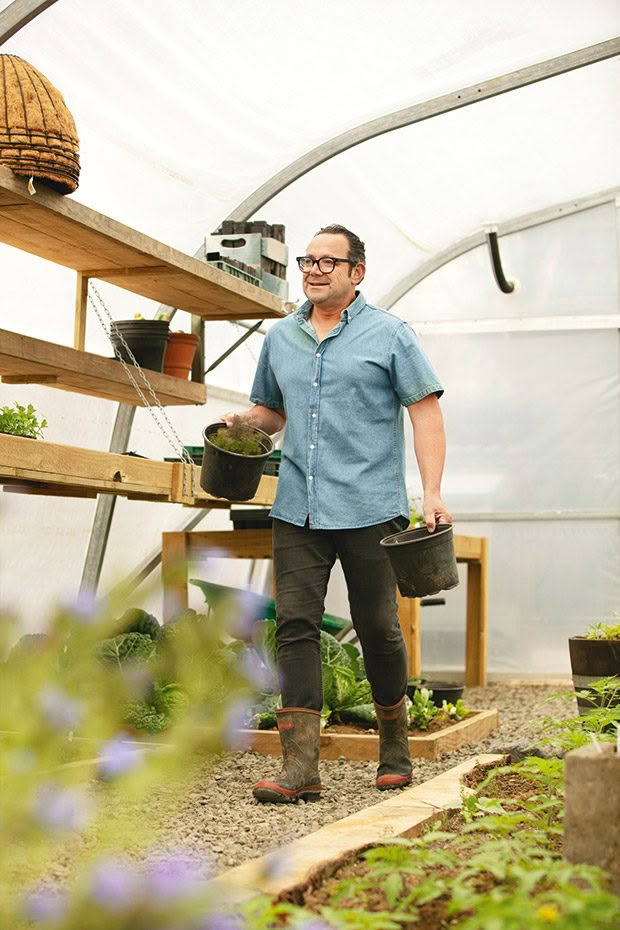5 things to consider when planning a greenhouse

What to think about if you’re buying a greenhouse for the first time.
Words: Nadene Hall
1. SIZE
Most home garden greenhouses are 1.8m (6ft)-3.65m (12ft) wide, and from 2-10m+ long. If you’ve used cloches to protect your crops in the past, it’s a good clue to how many square metres you’ll want your greenhouse to cover.
You’ll also need to allow space for an aisle or aisles. The most popular width for home growers is 2.4 wide (about 8ft) which leaves room for an aisle down the middle and growing beds either side.

Draw up a basic layout showing how many square metres of growing space you’ll want, plus room for a comfortable walking space – typically around 60cm wide, or up to 1m wide if you want to include shelving.
Changes to the Building Act mean you can now build a greenhouse up to 30m² without requiring building consent. If you go up to the 30m² limit, it gives you a greenhouse 2.4m wide by 12m long, or 3.65m x 8m.
Tip: if in doubt, go bigger
Greenhouses are a great workspace and it’s common for them to quickly fill up with plants and equipment. Some gardeners also use them as storage for ride-on mowers, wheelbarrows etc.
2. PLACEMENT
To find the best spot in your garden, you need to consider:
– year-round sunlight levels, so keep it away from the shade spread of trees;
– shelter, such as a fence or hedges especially if you’re in a windy region;
– a level or very close-to-level site;
– somewhere close to water, power, and the house – the closer it is, the more you’ll visit.
If the best site doesn’t have good soil, you can add it, build raised beds, or use grow bags.

Tip: The ideal spot will receive at least six hours of direct sunlight during winter.
Tip: Strong winds can lift an insecurely mounted greenhouse. Consider using brackets to secure it to concrete footings, or a concrete or wooden base.
3. DRAINAGE
If it’s large enough, a greenhouse roof will shed a lot of water. You’ll need some way to drain it to avoid wet patches, or you could use guttering to direct water into a storage tank.

4 .WARMTH
You can use direct heat sources, such as fan heaters, to warm a greenhouse, but there are passive ways to do it, including:
– large (200 litre) barrels of water, sitting in the sunniest spots;
– concrete, pavers, or stone pathways;
– raised beds or grow bags (which keep soil warmer);
– a compost heap, ideally in the middle.

Chef Michael Van de Elzen went big with the tunnel house on his block. It’s 6m wide, 16m long (96m²), with a top vent and watering system.
Covering plants with a good quality frost protection cloth will keep the temperature around the plant up to 4°C higher.
5. FLOORING
Some sites may have soil that’s good enough to plant into directly. If not, lay down weed mat and cover with pavers or loose gravel to prevent weeds growing up and under the frame.
Tip: If temperatures get very low over winter, a couple of layers of thick builder’s plastic (available from hardware stores) underneath pavers insulates them from cold soil, helping to maintain their heat overnight.
6. POLLINATION
It can be difficult to persuade bees and other pollinators to fly inside a greenhouse.

It’s important to have flowering plants leading up to the door and surrounding the sides so you encourage them to venture inside.
Plant beds or pots of flowers that you can keep adding to over spring and summer so there’s always a good food supply.
5 UNDERCOVER OPTIONS
‘Greenhouse’ is a generic term for a plastic or glass-covered frame that keeps plants warm. Manufacturers use different glazing options and shapes.
Cloche: half-round hoops that hold plastic or netting just above the height of the crop.

Tunnelhouse: half-round shape; plastic film covering.
Polycarbonate greenhouse: straight-sided; uses plastic twin-walled panels with air pockets running between the walls for thermal efficiency, less likely to break than glass.
Glasshouse: straight sided; uses glass (ideally toughened) for superior light transmission.
Shadehouse: straight-sided or half round; uses mesh or shadecloth covering to reduce sunlight while maintaining airflow; some use plastic film for the roof and mesh or shadecloth for the ends.
Love this story? Subscribe now!
 This article first appeared in NZ Lifestyle Block Magazine.
This article first appeared in NZ Lifestyle Block Magazine.
